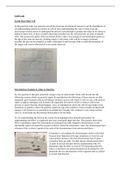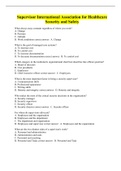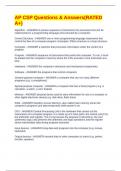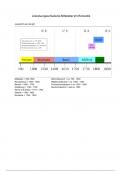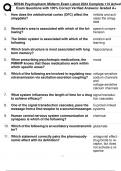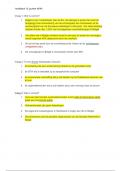Ultimate TAO Summary
Week 1
Adaptation is crucial for a firm’s survival. Morgan's (2006) theory of contingency is not about
organisations being flexible, but some are better than others and the environment decides this
(Morgan, 2006). Albacote (2014), organisations can adjust and even co-evolve. E.g. the
environment is made up of organisations. The organisation influences the environment and
other organisations are going to copy, hence the environment influencing organisations. So
adaption is driven by external and internal selection (Morgan, 2006); determinism (externally
pulled) vs. voluntarism (internally pushed) (Abatecola, 2014). Routines are important internal
selection mechanisms, and enable adaptation as they are a key resource or capability, although
routines will foster inertia in the end. Breaking away requires intentional action, and requires
meta-routines. Such is the role of routines in VSR (Feldman & Pentland, 2003). Strategising
needs to be both induced (Variation reducing, ostensive routines) and autonomous
(Variation stimulating, performative routines), in the role of strategy in VSR. Combine
strategic and structural context (Burgelman, 1991), all four articles together make the
internal and external VSR.
Week 2
The performative, instead of ostensive, enactment of routines is learning through
experimentation (trial and error), so then learning must be one of the competencies and
capabilities a firm needs for adaptation. Performance affects learning through benefits / triggers
(feedback) / drawbacks. Learning effects improve performance over time (Argote and Epple,
1990). But learning may lead to a core rigidity instead of a core capability (Leonard-Barton,
1992), hence inertia. In addition to that, can you force learning? Has that worked in your life?
How learning impacts the internal selection environment and adaptation is unknown. This has
to do with limits to learning: such as learning myopia – being either Temporal, Spatial or
Failure – and / or learning biases (Failure trap [extreme exploration], Success trap [extreme
exploitation]) (Levinthal & March, 1993). In addition to that, the link with performance is
complex (Greve, 1998), and can act as a trigger for learning, in the form of either problematic,
slack or both combined into environmental search (Greve, 2003).



